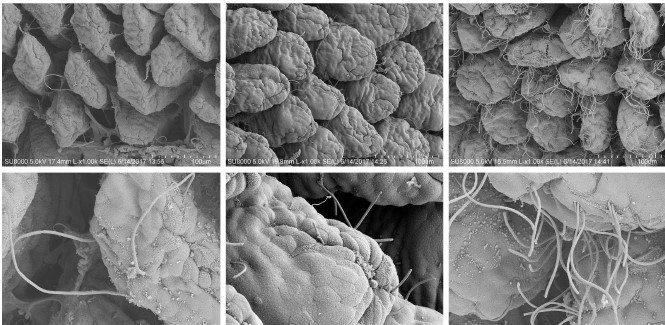Innate and adaptive lymphocytes sequentially shape the gut microbiota and lipid metabolism
2/13/2018
Kairui Mao, Antonio P. Baptista, Samira Tamoutounour, Lenan Zhuang, Nicolas Bouladoux, Andrew J. Martins, Yuefeng Huang, Michael Y. Gerner, Yasmine Belkaid & Ronald N. Germain
The recent paper published by Mao et al. describes new insight about the interaction of the innate and adaptive immune systems to establish a balanced commensal state and tissue metabolic homeostasis.
The mammalian gut is colonized by numerous microorganisms collectively termed the microbiota, which have a mutually beneficial relationship with their host. Normally, the gut microbiota matures during ontogeny to a state of balanced commensalism marked by the absence of adverse inflammation. Subsets of innate lymphoid cells (ILCs) and conventional T cells are considered to have redundant functions in containment and clearance of microbial pathogens, but how these two major lymphoid-cell populations each contribute to shaping the mature commensal microbiome and help to maintain tissue homeostasis has not been determined. Here we identify, using advanced multiplex quantitative imaging methods, an extensive and persistent phosphorylated-STAT3 signature in group 3 ILCs and intestinal epithelial cells that is induced by interleukin (IL)-23 and IL-22 in mice that lack CD4+ T cells. By contrast, in immunecompetent mice, phosphorylated-STAT3 activation is induced only transiently by microbial colonization at weaning. This early signature is extinguished as CD4+ T cell immunity develops in response to the expanding commensal burden. Physiologically, the persistent IL-22 production from group 3 ILCs that occurs in the absence of adaptive CD4+ T-cell activity results in impaired host lipid metabolism by decreasing lipid transporter expression in the small bowel. These findings provide new insights into how innate and adaptive lymphocytes operate sequentially and in distinct ways during normal development to establish steady-state commensalism and tissue metabolic homeostasis.

 Gastrointestinal System
Gastrointestinal System





